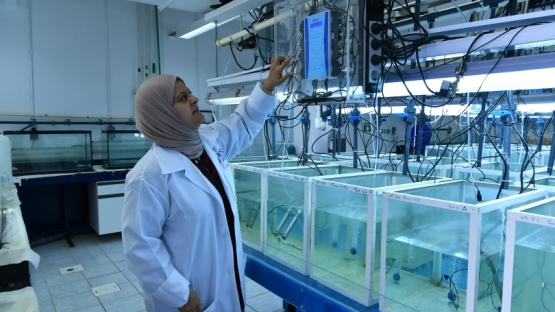The use of early warning systems to assess radiation levels is another important area of research. In cooperation with the IAEA, Kuwait’s experts have established a marine radioactive assessment network, which compares the radiation levels to baseline radioactive levels established in the 1990s, said Saif Uddin, adding that regular assessments are undertaken to check any impact on the marine environment. Data demonstrates that radioactivity levels are normal, and marine life is safe.
Gamma ray detectors are deployed at sea in an array of locations and studies are conducted on water entering the Gulf to detect and, in conjunction with hydrodynamic measurements and modelling, evaluate if there is any radioactivity which can impact seawater desalination, which is the source of freshwater supply in the country. The IAEA support, delivered through its technical cooperation programme, includes providing laboratory equipment as well as training of staff in gamma and alpha spectrometry, all of which are used to measure radioactivity in the marine environment.
Other IAEA supported projects relate to the monitoring of pollutants in the marine environment and how these have changed since the first Gulf war in 1990.
Nuclear technology is also used for seafood safety, for example, to monitor biotoxins produced by microscopic algae, known as harmful algal blooms (HABs). Factors such as surface water temperature, the circulation of wind and water, the natural movement of nutrient rich waters towards the surface or the accumulation of agricultural run-off into the sea can trigger algal blooms, which can sometimes include toxic species. These toxins then enter the food chain and present a danger for people and threaten the livelihood of communities depending on fisheries.
This is where using nuclear techniques such as the receptor binding assay (see Science box) to track biotoxins from HABs is useful. Under an IAEA supported project, this technique will be utilized for the detection of toxins in seafood. This information will be very important for hazard preparedness and as early warning, Saif Uddin said.







